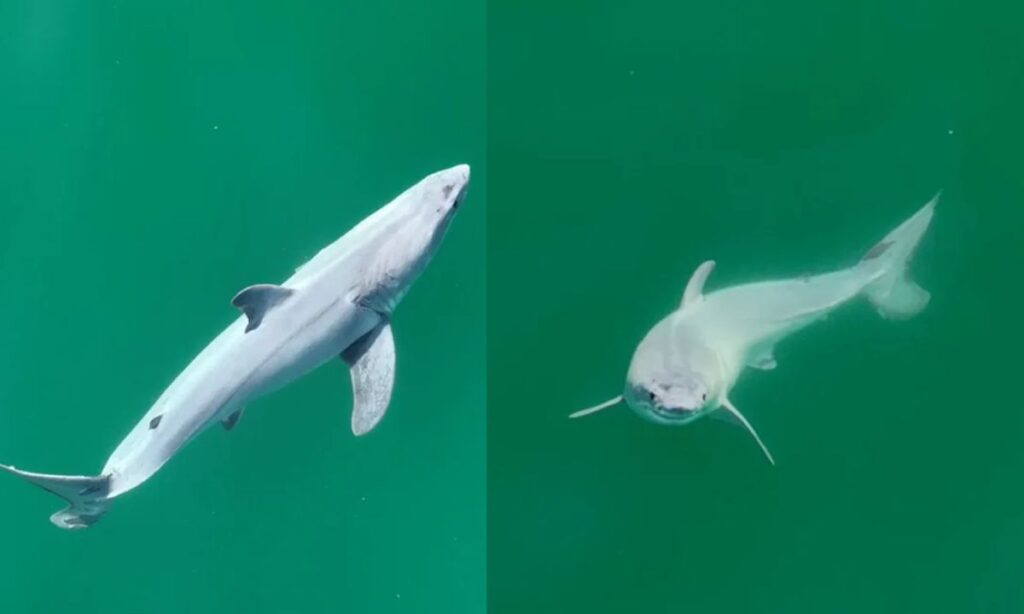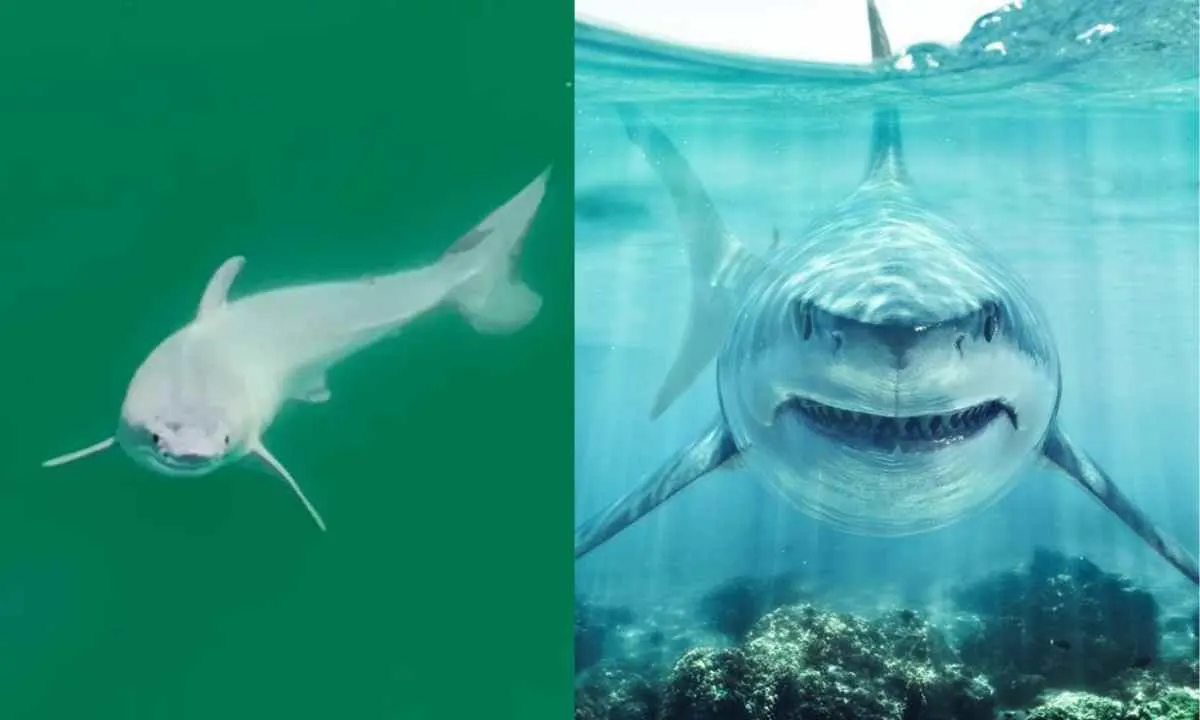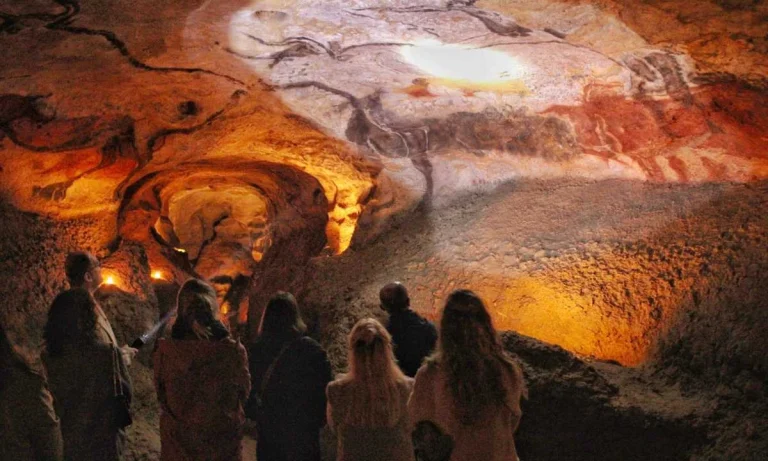For the first time ever, the waters off the coast of California have revealed a newborn great white shark. This great white shark has been observed in its natural habitat and was captured by a drone camera operated by a filmmaker. This raw footage is a rare finding. It is believed to solve one of the greatest mysteries in science, which is the exact birthing ground of the great white sharks!
Marine biologists and shark enthusiasts are overjoyed with this sighting. There has never been a sighting of a newborn great white shark in the wild and alive. This discovery could chart a new understanding of these mystical creatures. Let’s have a closer look at this groundbreaking finding and its implications.
World’s First Glimpse of a Great White Shark Newborn
Wildlife filmmaker Carlos Gauna and Phillip Sternes, a UC Riverside Ph.D. candidate, captured the footage on July 9, 2023, in Carpinteria, California. Their routine aerial recording showed an unusual sighting. Gauna has been filming for more than eight hours and they have spotted a large shark go down in the water and disappear. After some time, they were able to see the little white shark on the water.
The drone footage revealed a 5-foot-long, distinctively pale great white shark. This tiny shark was also veiled in a “milky” white substance which is believed to be the pup shedding its embryonic layer. All the details on this shark suggested it was a newlyborn pup. Such newborns had never before been captured on camera in the wild, setting this event apart as a marine milestone.
“I fell out of my seat in excitement as it was unlike anything I had ever seen before,” said Sternes to ABC News. “He did, he literally fell out of his chair. I think he shed a tear. I was focused on flying but it was really an incredible moment,” Guana confirmed Sternes’ reaction.
Guana & Phillip Sterns (ABC news)
Understanding Great White Sharks
Great white sharks are often labeled the ocean’s challenging predators. They are a type of mackerel shark and are the largest of the bunch—and the world’s largest predatory fish. However, they are complex creatures deserving of study. These sharks have a unique physique and hunting prowess.
Great whites can swim through the water at speeds of around 35 miles an hour (50 kilometers an hour) and have a bite force of 1.8 metric tons. Their incredible speed and bite force allow the shark to quickly cause unbelievable trauma to their prey. Great white sharks are known for their aggression only when threatened or during feeding. They gracefully swim through the waters, primarily focused on survival rather than unprovoked attacks.
The white sharks have seven rows of jagged, 2.5-inch-long teeth, which counts roughly 300 teeth in total. But most aren’t used to bite. Their teeth function like an efficient, conveyor-belt-like apparatus. Also, they have the ability to replace teeth that are lost during daily wear and tear. These great white sharks rule the seas with an expected lifespan that is a few decades.
The Mystery of Shark Birthing Grounds
The birthing grounds of the great white shark have always remained a mystery. The importance of revealing such locations extends beyond academic interest.
Young white sharks previously found in southern California and Long Island New York, have been under observation. But the exact location of their birth was never known. With this sighting, scientists are closer to painting a complete picture of the great white’s lifecycle.
“Where white sharks actually give birth to their pups remains one of the ocean’s great mysteries.”
Tobey Curtis, a shark scientist with the National Oceanic and Atmospheric Administration (ABC news)

Implications of the Discovery
There are less than 3,500 great white sharks left in the world and their population is currently decreasing worldwide. IUCN Red List also records Great white sharks as “vulnerable” across the world and “critically endangered” in Europe. Phillip Sternes stressed the importance of lawmakers protecting the waters where great white sharks are giving birth.
This revelation has the power to alter conservation courses, particularly if the location proves to be a recurrent birthing spot.
Conclusion
The sighting of the newborn great white shark off California’s coast represents a scientific advancement and a triumph for environmental conservation. By potentially solving this piece of the shark science puzzle, we not only enrich our knowledge but also safeguard a globally endangered species.
Also read,











